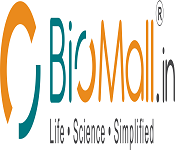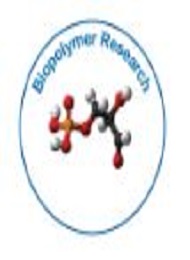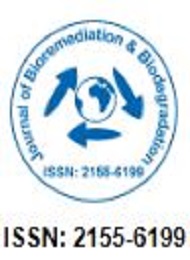Theme: Advanced Technology Research - Polymer Chemistry
Polymer Chemistry Congress 2019
About Conference
On the behalf of Organizing Committee we coordinately invite you to attend the Polymer Chemistry Congress 2019 held on December 02-03, 2019 Tokyo, Japan. The gathering is Featured with the “Advanced Technology Research - Polymer Chemistry" which will give a worldwide stage to talk and present your research work on the relevant topics of Polymer Chemistry and research.
Polymer Chemistry Congress 2019 World congress is an endeavor to investigate the different approaches to use regular assets for advancement of things to come, promising a superior tomorrow for the offspring and a superior vision for the springing research. Polymer science gatherings is foreseen to be a standout amongst the best logical meetings in Asia and Australia. The logical sessions of this International Conference on polymer science meetings has been structured on vivacious themes, for example, Biomaterials and Biopolymers, Green Chemicals, Industrial Biotechnology, Micro and Nano mixes dependent on characteristic polymers. Polymer Chemistry meetings is comprising of efficient logical program and bubbly talks by the ability.
Benefits of attending !
Benefits to Attend Polymer Chemistry Congress 2019
- Learning in a New Space
- Learning with the experts
- Novel techniques to benefit your research
- Lectures by active practitioners
- Networking with new people within your field
- Keynote forums by Prominent Professors, Doctors and Physicians
- Poster presentations by Young Researchers
- Learning about facts and statistics to better understand the market and industry
Target Audience:
- Polymer Technology Manufacturers
- Chemical professionals
- Environmentalists working on plastic reduction research
- Quality control specialists
- Polymer Chemists, Polymer Scientists, & Chemists
- PhD Scholars
- All plastic & textile manufacturers and providers
- Polymer Chemistry Scientists and Researchers
- Graduates and postgraduates in industrial plastic manufacturing
- Business Development Managers
- Distributors and Suppliers of Polymer Synthesizing Technologies
- Professors, Researchers, and Faculty of Polymer Chemistry & Polymer Science from Universities and Colleges
- Directors, CEO’s of Chemical and Pharmaceutical Organizations
- Scholars from Polymer Chemistry, Polymer Science, Plastic research, and interrelated fields.
- Delegates from all fields who are interested in the listening the proceedings of the conference as well as looking to explore the venue
- Researchers from Plastic Manufacturing Companies, Polymer Companies, Synthetic Manufacturers, Resins & plastics, Textile manufacturing industries, Adhesives & Paints Suppliers & Chemical Associations and Societies
Track 01: Polymer Chemistry
Polymer chemists’ study large, complex molecules (polymers) that are enhance from many smaller (sometimes repeating) units. They study how the smaller building blocks (monomers) incorporate, and create useful materials with specific characteristics by manipulating the molecular structure of the monomers/polymers used, the composition of the monomer/polymer consolidation, and applying chemical and processing techniques that can, to a large extent, affect the properties of the final product. Polymer chemists are different within the chemistry community because their understanding of the relationship between structure and property spans from the molecular scale to the macroscopic scale.
Related Conferences: Polymer Chemistry Congress | Polymer Chemistry Conferences | Polymer Conferences
Track 02: Polymer Synthesis
Polymer scientists has been created a different farming methodology research in the development of biodegradable polymers, which could find enormous applications in the area of medical science. Today, different biopolymers have been prepared and utilized in different biomedical applications. Despite the apparent proliferation of biopolymers in medical science, the science and technology of biopolymers is still in its early stages of development. Tremendous window exists and will remain to exist for the penetration of biopolymers in every facet of medical science through intensive research and development. Therefore, this chapter addresses various polymerization methods and techniques employed for the preparation of biopolymers. The emphasis is on the properties of biopolymers, synthetic protocols, and their biomedical applications. In order to make the useful biomedical devices from the polymers to meet the demands of medical science, various processing techniques employed for the development of devices have been discussed.
Related Conferences: Polymer Chemistry Congress | Polymer Chemistry Conferences | Polymer Conferences
Track 03: Polymer Engineering
Polymer engineering is part of the growing field of materials engineering that focuses on plastics and other polymers. Read about degrees available, job options and salaries in this field Smart Materials. Polymer engineering majors require lots of math and science courses, including polymer chemistry, physics and calculus. Core courses may include thermodynamics, statics and material strength, polymer production and technology, polymer properties, polymer analysis and polymer processing. During a capstone course, you'll create an original polymer engineering project. A general materials engineering program usually includes some of the same courses, but also covers other materials, such as ceramics and metals.
Related Conferences: Polymer Chemistry Congress | Polymer Chemistry Conferences | Polymer Conferences
Track 04: Polymer Technology
Polymer Technology works with properties and estimation of polymeric materials properties, such as mechanical properties and life length prediction. A major part of our work is the base for certification of products for use in different areas, from packages to buildings.
Polymer Technology deals with plastics in many different aspects. We evaluate the mechanical properties of polymeric materials and products durability in their environment of use.
Related Conferences: Polymer Chemistry Congress | Polymer Chemistry Conferences | Polymer Conferences
Track 05: Polymer Nanotechnology
Nanotechnology is one of the popular areas for current research and development in basically all technical disciplines. This obviously includes Polymer Nanotechnology which includes microelectronics (which could now be referred to as nanomaterial). Other platforms include polymer-based biomaterials, Nano medicine, Nano emulsion particles; fuel cell electrode polymer bound catalysts, layer-by-layer self-assembled polymer films, electro spun nanofabrication, imprint lithography, polymer blends and Nano composites. Phase separated polymer blends often achieve Nano scale phase dimensions; block copolymer domain morphology is usually at the Nano scale level; asymmetric membranes often have Nano scale void structure, mini emulsion particles In the large field of Nanotechnology, polymer matrix based Nano composites have become a prominent area of current research and development. Study of polymers nanotechnology target on endeavor to design materials at a molecular level to achieve desirable properties and applications at a macroscopic level.
Related Conferences: Polymer Chemistry Congress | Polymer Chemistry Conferences | Polymer Conferences
Track 06: Polymerization Techniques
Polymer Technology have recasted the department of material science increasing the use of polymer-based substances from building materials to Packing materials, Fancy decoration articles, Electrical engineering, Communications, Automobile, Aircraft's, etc.
Polymer Technology carved a niche in the fields of electronics and electrical materials, textiles, aerospace industry, automobile industry, etc. She has been able to tailor the industry needs to suit the specifications provided.
Related Conferences: Polymer Chemistry Congress | Polymer Chemistry Conferences | Polymer Conferences
Track 07: Polymer Synthesizing Techniques
Inorganic polymers stationed on alumina and silica polysialate units were synthesized from dehydroxylated aluminosilicate clay (metakaolinite) condensed with sodium silicate in a highly alkaline environment. Combination of the aluminosilicate with alkali polysilicates yields polymeric Si–O–Al three-dimensional structures with charge-balancing positive ions such as hydrated Na+ in the framework cavities. A statistical study of the effect on the polymerisation process of the molar ratio of the component oxides and the water content of the mixture showed the latter to be a critical parameter.
Related Conferences: Polymer Chemistry Congress | Polymer Chemistry Conferences | Polymer Conferences
Track 08: Polymer Production Methods
Materials as a field is most frequently represented by ceramics, metals, and polymers. Improvements have taken place in the department of ceramics and metals, it is the field of polymers that has experienced an explosion in progress. Polymers have gone from being cheap substitutes for natural products to providing high-quality options for a wide variety of applications. Further advances and breakthroughs supporting the economy can be expected in the coming years.
Related Conferences: Polymer Chemistry Congress | Polymer Chemistry Conferences | Polymer Conferences
Track 09: Polymers in Medicine
Synthetic and natural polymers (biopolymers) are frequently used in tissue engineering because of valuable properties e.g. biocompatibility, biodegradability, good mechanical properties etc. For these reasons, a lot of current research studies for medicine is focused on this group of materials. Polymers provides feasibility to fulfill the main assumption of regenerative medicine and tissue engineering, which is formation of wholesome tissue in in vivo conditions.
Related Conferences: Polymer Chemistry Congress | Polymer Chemistry Conferences | Polymer Conferences
Track 10: Biomaterials and Biopolymers
Biomedical applications, polymers with good biological compatibility (such as Teflon) are also considered as biomaterials, and though, strictly, they are not biopolymers, they will be treated as biomaterials in this chapter. In this way we are led to consider the electret properties of artificial polymers such as Teflon and polysulfonate films which are of importance for biological or medical applications.
Related Conferences: Polymer Chemistry Congress | Polymer Chemistry Conferences | Polymer Conferences
Track 11: Biobased and Biodegradable Polymers
A plastic that experiences biodegradation (a procedure where the corruption results from the activity of normally happening smaller scale life forms, for example, microscopic organisms, growths, and green growth) according to acknowledged industry measures. Starting at 2008, acknowledged industry standard determinations are: ASTM D6400, ASTM D6868, ASTM D7081 or EN 13432.
Bioplastics from normal polymers, straightforwardly removed from biomass: Polysaccharides, Proteins, Bacterial polymers
Thermoplastic and thermosetting bioplastics, by implication created from biomass: Poly (lactic corrosive) and Bio-polyesters, Glyceride based materials from vegetable oils, Materials dependent on polyols separated from biomass.
Related Conferences: Polymer Chemistry Congress | Polymer Chemistry Conferences | Polymer Conferences
Track 12: Sustainable and Eco-friendly Polymers
The natural benevolent polymers contain the polymers or their composites which are either biodegradable or biobased (from sustainable assets). Their carbon-nonpartisan lifecycle may lessen the discharge of carbon dioxide and the reliance on oil-based materials, and afterward diminish the human impression on the earth. Because of the worries with the current expanding ecological issues and consumption of oil, it is certainly essential for both scholarly and industry to connect the extraordinary significance to the advancement of the natural inviting polymers materials or "green materials." indeed, the huge accomplishments in this field have been gotten by scientists, physicists, and designers who perceived the significance of growing earth capable materials.
Related Conferences: Polymer Chemistry Congress | Polymer Chemistry Conferences | Polymer Conferences
Track 13: Polymer Physics and Opto-electronics Polymers
Optoelectronic gadgets are being created at an exceptional rate. Natural light emanating diodes, photovoltaic gadgets and electro-optical modulators are significant to the eventual fate of showcases, photosensors and sunlight-based cells, and correspondence advances. This book subtleties the speculations fundamental the important systems in natural materials and spreads, at an essential dimension, how the natural parts are made.
Related Conferences: Polymer Chemistry Congress | Polymer Chemistry Conferences | Polymer Conferences
Track 14: Material Science and Polymer Colloids
Colloid and Polymer Science - a main worldwide diary of longstanding custom - is dedicated to colloid and polymer science and its interdisciplinary cooperation. Accordingly, it reacts to an interest which has lost none of its fact as uncovered in the patterns of contemporary materials science. To empower a compelling and quick dispersal of logical compositions, four classes of commitments are exhibited: - Invited survey articles - Leading commitments - Original commitments - Short correspondences.
Related Conferences: Polymer Chemistry Congress | Polymer Chemistry Conferences | Polymer Conferences
Track 15: Functional Polymers
Useful polymers will be polymers bearing useful gatherings that have a more noteworthy extremity or reactivity than an exemplary hydrocarbon chain. Such materials regularly show improved properties, with respect to their nonfunctional partners, by ideals of upgraded affiliation, isolation, or reactivity. Living anionic polymerization is a flexible and generally utilized strategy for fitting great characterized polymers with at least one in-chain or chain-end utilitarian gatherings. These practical gatherings can be abused in reversible ionic affiliation, chain expansion responses, fanning science, or crosslinking responses.
Related Conferences: Polymer Chemistry Congress | Polymer Chemistry Conferences | Polymer Conferences
Track 16: Supramolecular Polymers and 3D Printing
A progression of polymers equipped for self-amassing into boundless systems through supramolecular collaborations have been planned, combined, and described for use in 3D printing applications. The biocompatible polymers and their composites with silica nanoparticles were effectively used to store both basic cubic structures, just as a progressively mind boggling contorted pyramidal component. The polymers were observed to be not lethal to a chondrogenic cell line, as indicated by ISO 10993-5 and 10993-12 standard tests and the cells appended to the supramolecular polymers as shown by confocal microscopy. Silica nanoparticles were then scattered inside the polymer grid, yielding a composite material which was upgraded for inkjet printing. The half breed material demonstrated guarantee in starter tests to encourage the 3D statement of a progressively mind-boggling structure.
Related Conferences: Polymer Chemistry Congress | Polymer Chemistry Conferences | Polymer Conferences
Track 17: Advanced materials in Polymers
Research of cutting-edge materials, polymers and nanotechnology principally centers around endeavors to structure materials at a sub-atomic dimension to accomplish alluring properties and applications at a plainly visible dimension. With this expansive center, inquire about reaches from principal logical examinations of the connections, properties and get together of such sub-atomic constituents to connected, building endeavors that make an interpretation of such central data to cutting edge mechanical advances.
Related Conferences: Polymer Chemistry Congress | Polymer Chemistry Conferences | Polymer Conferences
Track 18: Macromolecules, Polymer Networks and Gels
Arrangement and substance plan of systems and gels: controlled polymerization strategies, natural and natural inorganic systems and gels, miniaturized scale and Nano composites, biopolymer gels, combination of mixture frameworks with biopolymer themes, physical gels, response.
Gelation, arrange development, and properties: structure changes during gelation and system development; static and dynamic properties, swelling balance and elements, gel condition of issue: from fluids to solids on schedule/temperature scales; recreation.
Polymer systems and gels at work/administration: gels in life sciences, controlled medication discharge and focusing on, responsive gels in biomedical and indicative applications, gel builds, contact focal points and eye gadgets, systems and gels from inexhaustible assets.
Related Conferences: Polymer Chemistry Congress | Polymer Chemistry Conferences | Polymer Conferences
Track 19: Plastics, Biopolymers and their Environmental Impact
Biopolymers are commonly considered an eco-accommodating option in contrast to petrochemical polymers because of the sustainable feedstock used to create them and their biodegradability. Notwithstanding, the cultivating practices used to develop these feedstocks regularly worry about noteworthy ecological concerns, and the creation vitality can be higher than for petrochemical polymers. Life cycle evaluations (LCAs) are accessible in the writing, which make correlations among biopolymers and different petrochemical polymers, anyway the outcomes can be unique. This survey has in this manner been embraced, concentrating on three biodegradable biopolymers, poly (lactic corrosive) (PLA), poly(hydroxyalkanoates) (PHAs), and starch-based polymers, trying to decide the ecological effect of each in contrast with petrochemical polymers.
Related Conferences: Polymer Chemistry Congress | Polymer Chemistry Conferences | Polymer Conferences
Track 20: Advances in Polymer Synthesis & Polymer Chemistry
A few late calculated advances, which exploit the plan criteria and down to earth methods of sub-atomic dimension control in natural science, permit readiness of well-characterized polymers and nanostructured materials. Two patterns are clear: the acknowledgment that union of complex macromolecules postures real difficulties and openings and the desire that such materials will display particular properties and capacities. Polymer amalgamation strategies currently being created will yield well-characterized manufactured macromolecules that are equipped for impersonating a large number of the highlights of proteins (for instance, three-dimensional collapsed structure) and other normal materials. These macromolecules have sweeping potential for the investigation of sub-atomic dimension conduct at interfaces, in slight movies, and in arrangement, while additionally empowering the improvement of epitome, medicate conveyance, and nanoscale-designing advancements.
Related Conferences: Polymer Chemistry Congress | Polymer Chemistry Conferences | Polymer Conferences
Track 21: Recent Developments in Polymer Synthesis
In application prospects and execution attributes and in property range and assorted variety, polymers offer curiosity and adaptability that can barely be coordinated by some other sort of materials. Polymers are gigantic macromolecules made out of rehashing basic units called monomers. Polymer advancements incorporate combination as well as its basic – useful relationship, polymer bio conjugation, and novel polymerization methods. In Polymerization, numerous monomers are consolidated in a compound response to frame macromolecules of various sizes and shapes. Polymers are prevalent in regular day to day existence - from plastics and elastomers on the one side to characteristic biopolymers, for example, DNA and proteins then again.
Related Conferences: Polymer Chemistry Congress | Polymer Chemistry Conferences | Polymer Conferences
Track 22: Current Trends in Polymer Chemistry
Interfacial polymerization is an empowering system for the enormous scale creation of ultrathin layers, empty nanospheres and nanofibers. The accessibility of a wide scope of appropriate monomer reactants takes into account the blend of an amazing gathering of polymers, including polyamides, polyurethanes, polyurea, polyanilines, polyimides, and polycarbonates. Moreover, the procedure has been utilized to get ready imperfection free, ultrathin movies of metal natural structures, natural inorganic half and halves, and bio-cross breeds. This survey gives a diagram of the science that is utilized in interfacial polymerization, talks about the (dis)advantages of inferred material sorts, and evaluates the prospects for amalgamation of ultrathin useful materials by means of interfacial polymerization.
Related Conferences: Polymer Chemistry Congress | Polymer Chemistry Conferences | Polymer Conferences
Polymer Chemistry Conference | Global Polymer Market Analysis:
The Polymer Chemistry market is required to observe an impressive development over the coming years attributable to the rising interest for plastics all more than a few vertical enterprises, for example, bundling, product plastics, building plastics and sustenance and refreshments. The present developments in plastic polymers by Increasing urbanization, rising salary and developing interest from the end-client portions are bringing about high development and exponentially rousing the Polymer Chemistry Conference.
Utilization of the plastic in sustenance preparing industry according to customer inclination and changing nourishment practice to store the sustenance items, for example, vegetables, crude meat, and fish in consumable state without debasing the healthy benefits of the sustenance are key components upgrading the development of the worldwide plastic polymer advertise.
Worldwide Polymer Chemistry covers the report of expanding interest for polymers in various businesses, including building and market has seen a noteworthy development in creating nations, for example, USA, UK, Japan, China, India and Brazil. Here is the Global Market investigation of various Polymers used in our everyday life
- The antimicrobial plastics market size is estimated to grow from USD 29.6 billion in 2018 to USD 43.1 billion by 2023, at a CAGR of 7.8
- The Polymer Chemistry size is projected to grow from USD 29.8 billion in 2018 to USD 42.9 billion by 2023, at a CAGR of 7.6%.
- The market size of HBPA epoxy resin is estimated at USD 1.7 billion in 2018 and is projected to reach USD 2.2 billion by 2023, at a CAGR of 5.1%, between 2018 and 2023.
- The aerospace plastics market is projected to grow from USD 14.7 billion in 2018 to USD 20.7 billion by 2023 at a Compound Annual Growth Rate (CAGR) of 7.1%
- The engineering plastics market is estimated at USD 80.70 billion in 2018 and is projected to reach USD 115.10 billion by 2023, at a CAGR of 7.2% from 2018 to 2023.
- Global automotive polycarbonate glazing market is estimated to grow with approx. 14.71% CAGR during the year 2019-2027 and is expected to gain $ 6366 million until the year 2027.

Conference Highlights
- Polymer Chemistry
- Polymer Synthesis
- Polymer Engineering
- Polymer Technology
- Polymer Nanotechnology
- Polymerization Techniques
- Polymer Synthesizing Techniques
- Polymer Production Methods
- Polymers in Medicine
- Biomaterials and Biopolymers
- Biobased and Biodegradable Polymers
- Sustainable and Eco-friendly Polymers
- Polymer Physics and Opto-electronics Polymers
- Material Science and Polymer Colloids
- Functional Polymers
- Supramolecular Polymers and 3D Printing
- Advanced materials in Polymers
- Macromolecules, Polymer Networks and Gels
- Plastics, Biopolymers and their Environmental Impact
- Advances in Polymer Synthesis & Polymer Chemistry
- Recent Developments in Polymer Synthesis
- Current Trends in Polymer Chemistry
To share your views and research, please click here to register for the Conference.
To Collaborate Scientific Professionals around the World
| Conference Date | December 02-03, 2019 | ||
| Sponsors & Exhibitors |
|
||
| Speaker Opportunity Closed | Day 1 | ||
| Poster Opportunity Closed | Click Here to View | ||
Useful Links
Special Issues
All accepted abstracts will be published in respective Our International Journals.
- Biopolymers Research: Open access
- Journal of Material Sciences & Engineering: Open Access
- Journal of Bioremediation & Biodegradation: Open Access
Abstracts will be provided with Digital Object Identifier by











